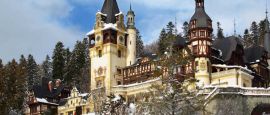Romania History, Language and Culture
History of Romania
The region of Romania has spent much of its history being shunted to and fro between various foreign powers. The Romans, Goths, Huns, Bulgars and Slavs all laid claim to the area before it was annexed by the Turkish Ottomans in the 15th century. It wasn’t until 1878 that Romania was recognised by the rest of Europe as an independent state.
It joined the Allied cause in WWI, but was occupied by the Germans in 1940 and placed in the hands of General Ion Antonescu, who joined the Nazis against the Soviet Union. In 1944, with Soviet forces about to occupy the country, Antonescu was overthrown and replaced by a coalition of communists, liberals and social democrats.
The communists established their political hegemony within the government and in 1947 the monarchy was deposed and the Romanian People's Republic declared. Nicolae Ceausescu assumed the post of First Secretary of the Romanian Communist Party in 1965 and under his rule the regime became increasingly oppressive. Ceausescu destroyed much of the beautiful historic centre of Bucharest, replacing it with bland concrete apartment blocks and a sprawling palace – the House of the Republic. He held power until the dramatic, bloody and largely unpredicted revolution during Christmas 1989.
This was a turning point in Romanian history. After several days of violent protests and fighting, during which around 1,000 people were killed, the president and his wife were captured, quickly tried and executed. The new government, under the provisional leadership of Ion Iliescu (the former Communist Central Committee Secretary) began the slow and painful process of preparing Romania for peaceful multi-party elections.
Today, Romania is a fully-fledged and cohesive democratic state. Although regular changes of government have held back the country’s development and economic progress has been patchy, the country is now a member of both NATO and the European Union and in 2008 it hosted its first NATO summit. Political and economic unrest in 2012 threatened a crisis, but the corner has been turned and the country is experiencing much more positive growth than many of Europe’s leading nations.
Did you know?
• Romania celebrates Great Union Day on 1 December to mark its joining with Transylvania.
• In 1986 Steaua Bucharest became the first Eastern European team to win football’s European Cup.
• The Dacia car factory in Mioveni is Europe’s fifth largest, producing more than 500,000 units a year.




 You know where
You know where